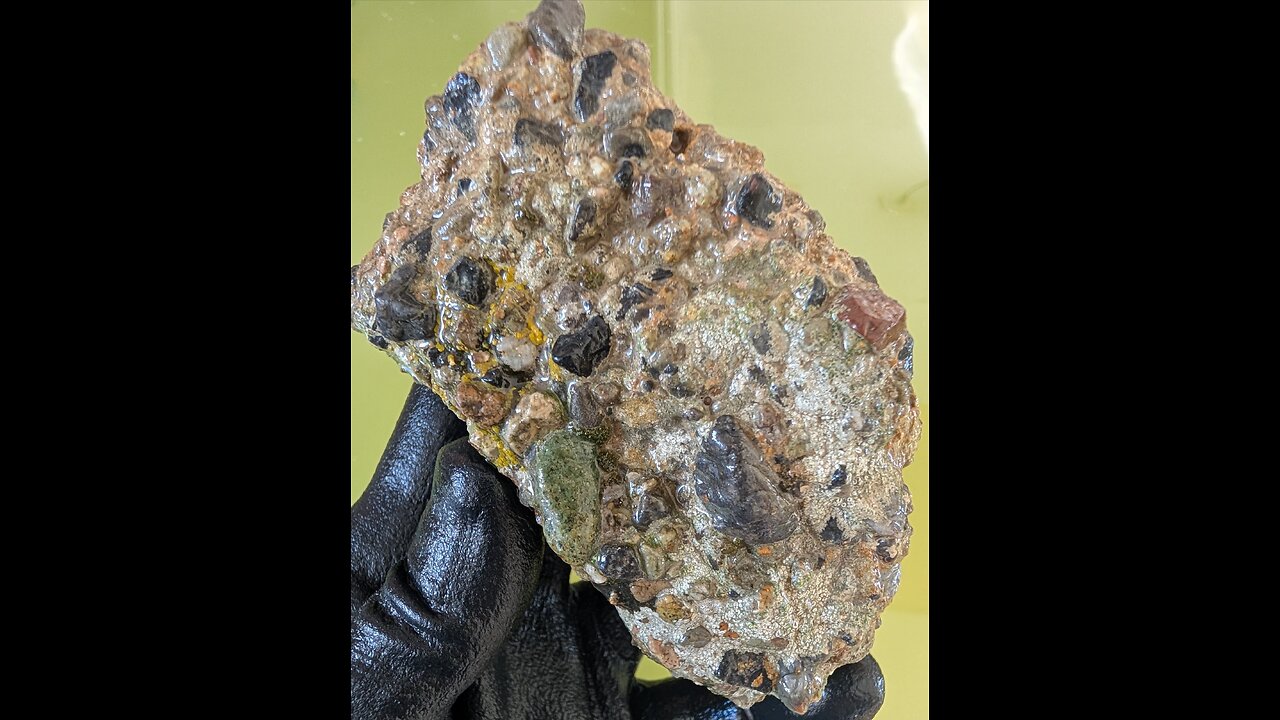Premium Only Content

Conglomerate!
Conglomerate is a clastic sedimentary rock composed mainly of rounded gravel-size clasts (pebbles, cobbles, and sometimes boulders) that are cemented together by a matrix of finer-grained sediments like sand, silt, or clay. Here are some key details about conglomerate:
Formation: Conglomerate forms in environments where there is strong water current or wave action that can transport and round the larger clasts before they are deposited. Common depositional environments include riverbeds, beaches, alluvial fans, and the bases of山 slopes where debris flows occur. Over time, these deposits are buried, compacted, and cemented.
Composition:
Clasts: These are the larger, rounded fragments which can be composed of various rock types like quartz, granite, basalt, or even other sedimentary rocks.
Matrix: The finer material that fills the spaces between the clasts, often composed of sand, silt, or clay.
Cement: Minerals like silica, calcium carbonate, or iron oxides that bind the clasts and matrix together.
Texture: Conglomerate has a coarse texture due to the presence of larger clasts. The texture can be described as poorly sorted if there is a wide range of clast sizes, or well-sorted if the clasts are more uniform in size.
Color: The color of conglomerate varies based on the composition of both the clasts and the matrix. Clasts can be of different colors depending on the source rock, and the matrix color can range from light to dark, influenced by the cementing material.
Types:
Orthoconglomerate: Where the clasts are well-rounded and the matrix is minimal or absent.
Paraconglomerate: Where the clasts are less rounded and there's a significant matrix, indicating less transport or different depositional conditions.
Uses:
Construction: Due to its durability, conglomerate can be used in construction for building stone, road base, or as an aggregate in concrete.
Decorative: Its unique appearance with varied clasts makes it suitable for decorative stone in landscaping or interior design.
Geological Studies: It provides valuable information about past environments, particularly regarding sediment transport and deposition.
Geological Significance: Conglomerate layers can tell geologists about the energy of the environment where they were deposited, the source of the clasts, and the processes involved in their formation. They can indicate ancient river systems, coastal environments, or even glacial activity.
-
 LIVE
LIVE
SpartakusLIVE
1 hour agoThe Boys are BACK || The Duke of NUKE and his Valiant Knights of the Tower of POWER
77 watching -
 LIVE
LIVE
The Mike Schwartz Show
4 hours agoTHE MIKE SCHWARTZ SHOW Evening Edtion 10-08-2025
122 watching -
 LIVE
LIVE
GritsGG
1 day ago36 Hour Marathon Stream! Most Wins in WORLD! 3704+!
140 watching -
 LIVE
LIVE
Mally_Mouse
8 hours ago📣Telescreen Talks - LIVE!
131 watching -
 LIVE
LIVE
Quite Frankly
7 hours agoAmelia Earhart, Obamacare Implodes, JFK, MUCH More | J Gulinello 10/8/25
528 watching -
 LIVE
LIVE
MissesMaam
5 hours agoSPOOKTOBER :: Variety Games 💚✨
37 watching -
 LIVE
LIVE
Meisters of Madness
2 hours agoThe Finals....Again
12 watching -
 LIVE
LIVE
Midnight In The Mountains™
3 hours agoGaming w/ Midnight | Active Matter Gameplay | Paul Version 2.0 Released!
32 watching -
 1:07:38
1:07:38
TheCrucible
3 hours agoThe Extravaganza! EP: 50 (10/08/25)
76.3K14 -
 1:27:22
1:27:22
Kim Iversen
3 hours agoThis Outsider Could Finally Take Down The Establishment | Candace Owens Was Right, Now Who Killed Charlie?
18.7K56
